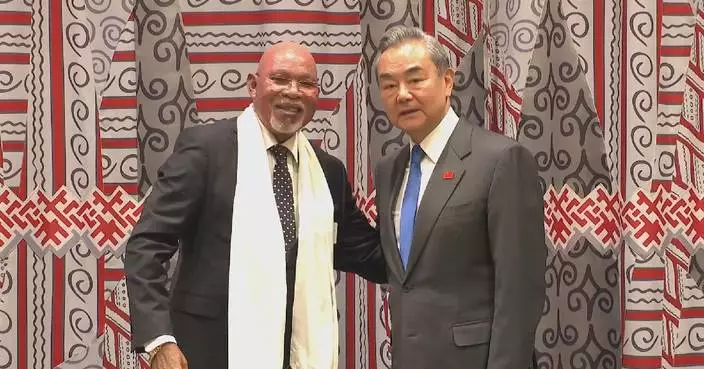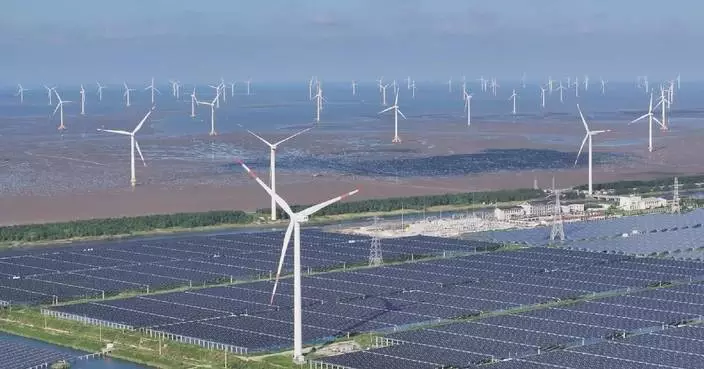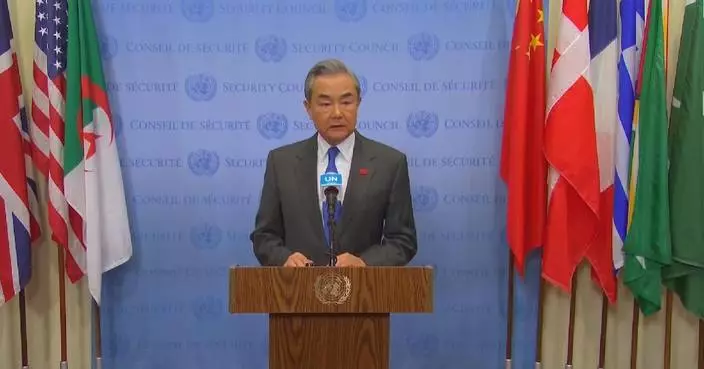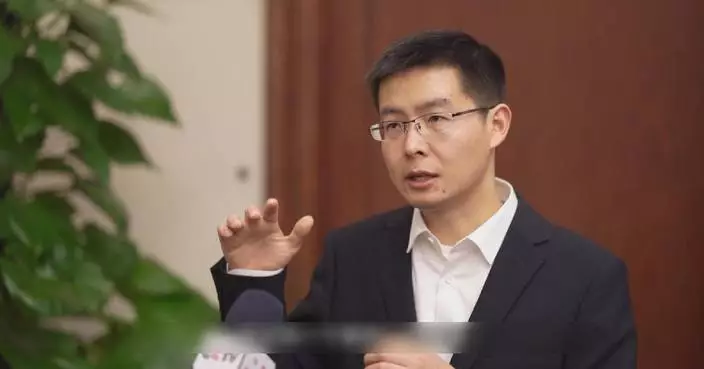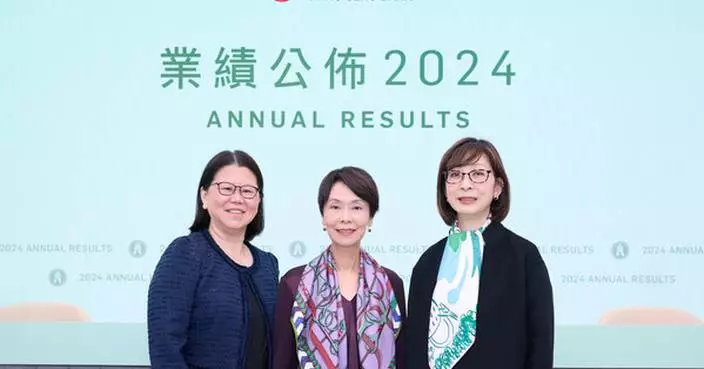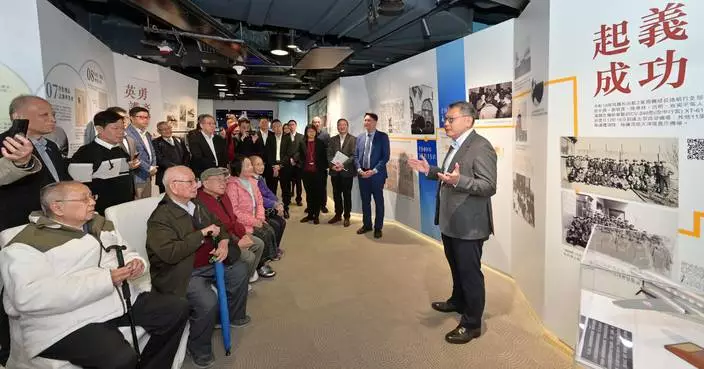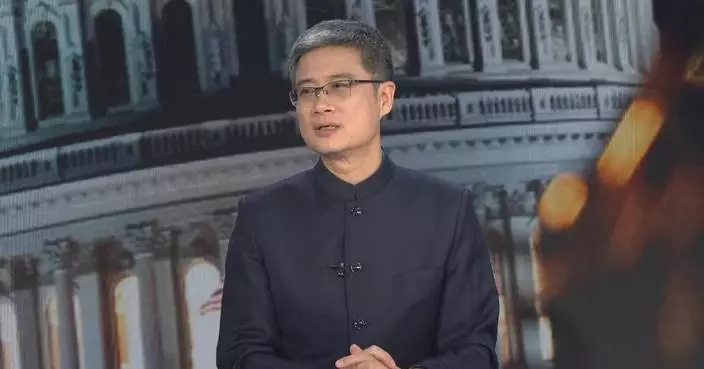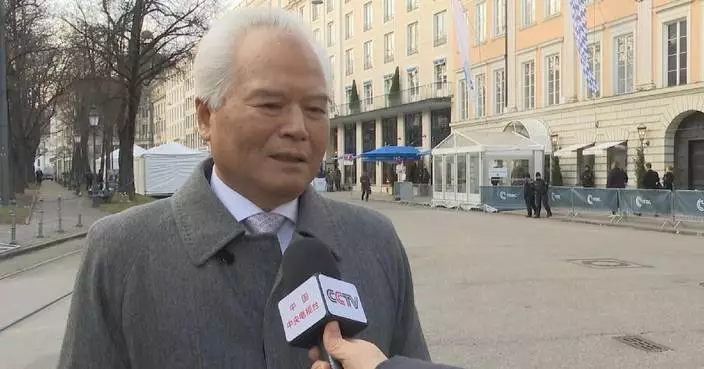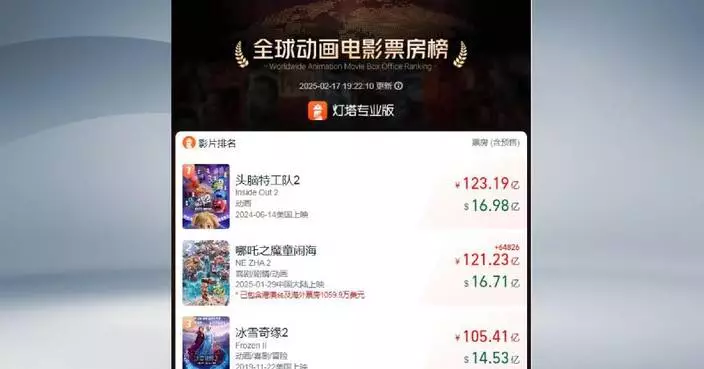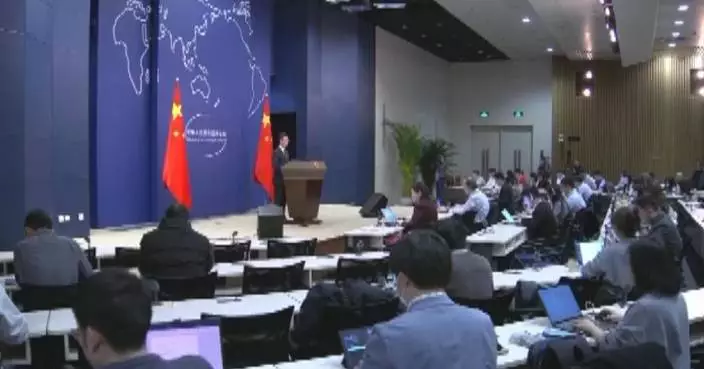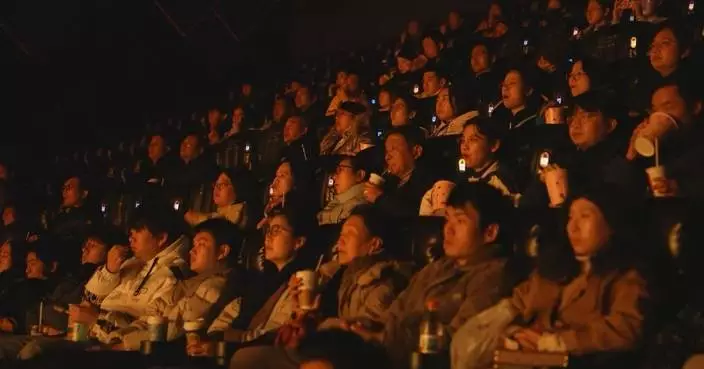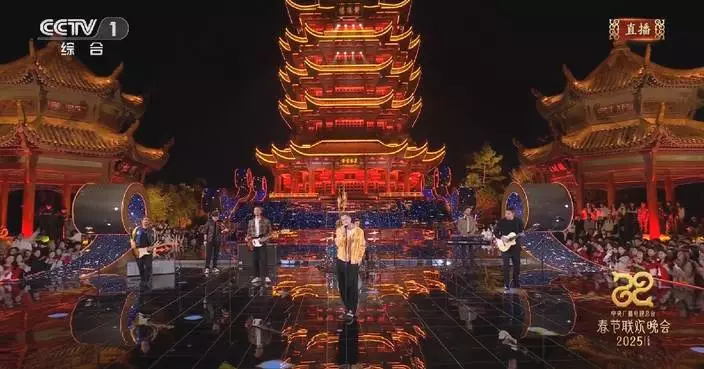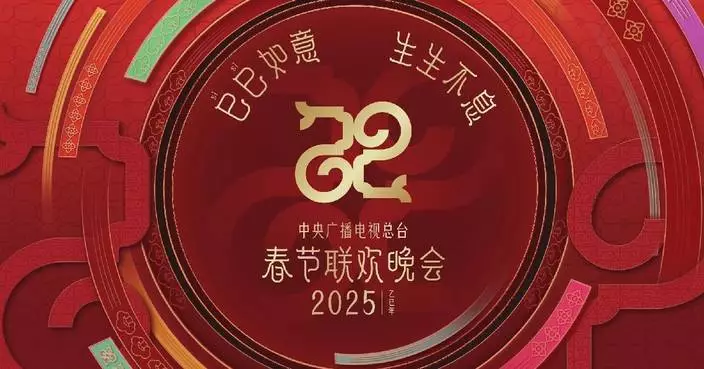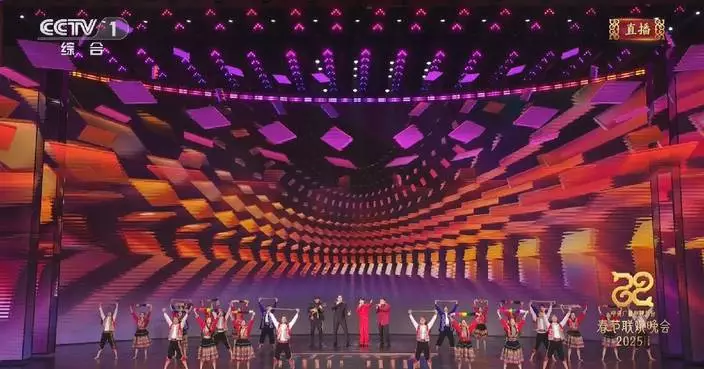Foreign visitors at Wuxi City of east China's Jiangsu Province -- one of the four sub-venues for the 2025 Spring Festival Gala held by the China Media Group (CMG) -- have shared admiration for the city's blend of tradition and modernity, highlighting its scenic beauty and vibrant atmosphere.
Wuxi captivated hundreds of millions of viewers across China and around the world at the 2025 CMG Spring Festival Gala on Tuesday, with a dazzling array of cultural performances showcasing the essence of its signature Jiangnan culture. Jiangnan refers to regions south of the Yangtze River.
For Mohamed Amranl, a manager at Trelleborg Group, China continues to impress him.
"China is really a new country for me, so it's like my first time I'm here, and it’s a really good impression for me," he said.
Lippai Tamas, a senior engineer at BLB-Soft and Technologies Kft, is no stranger to China, having visited the country several times.
"This is my fifth time in China. I have been in Guangzhou four times. I like it very much. I like the vivid colors. I like the warm welcome of my colleagues," he said.
Roberto Menendez, a senior program manager at SBU, said he was struck by the natural beauty and cultural richness of Wuxi.
"Wuxi is a beautiful city. Lots of rivers, it's like Venice, like in Europe. But you (China) have old structures and new buildings combined," he said.
Noel Richards, a teacher who recently moved to Wuxi, echoed these sentiments.
"Wuxi is a wonderful city, like I've been living here for the past few months and I'm exploring the city. I was working as a teacher in Chongqing. Chongqing was my first city (in China) and Chongqing is a mountain city, like it's totally different from Wuxi. And of course, I had a great experience in Chongqing too," he said.
For many foreign visitors, the Spring Festival is a new and exciting tradition to witness.
"I heard from my Chinese colleague. I've never experience it, but it's nice to be here and to witness it," said Guillaume Repecaud, a process improvement manager at Trelleborg Group.
The Spring Festival marking the start of the Chinese New Year is the most important traditional festival in China.
In the spirit of the festive season, the foreign visitors were eager to share their New Year wishes.
"I hope the best for the Wuxi population and for all Chinese population. And I hope for the next year, a good relationship between French people and Chinese people," said Guillaume Robert, an engineer from Savoye France.
Mohamed Amranl added his heartfelt wishes:
"I wish the best for everyone and happy life, and much happiness in our life."

Foreign visitors excited to explore festival, culture of east China's Wuxi

Foreign visitors excited to explore festival, culture of east China's Wuxi
The top six archaeological findings across China in 2024 were announced at Wednesday's annual archaeology forum hosted by the Chinese Academy of Social Sciences.
The discoveries, covering from the Paleolithic Age to the Yuan (1271-1368), Ming (1368-1644), and Qing Dynasties (1636-1912), shed light on studies on the history and culture of ancient China.
The earliest of the six, the Dadong Site, is located in Jilin Province in northeast China. Discovered in the strata dating from 28,000 to 24,000 years ago, the site involves an artificial stone circle, which should be the remains of a primary shed of ancient humans, implying the archaeological importance of the Changbai Mountain area in the field of evolutionary anthropology studies.
The Xiatang Site in east China's Zhejiang Province, a Neolithic Age settlement site, reveals the structure and layout of the ancient village, providing new evidence for the study of the social structure of early-stage agricultural societies.
At the Siwa Site, another Neolithic Age site in northwest China's Gansu Province, the first prehistory large-scale near square-shaped moat was discovered, which might hint at the origin of the square-walled cities in China.
The Zhouyuan Site in Shaanxi Province of northwest China shows evidence of China's earliest dynasties, providing written materials for studying the history of Western Zhou Dynasty (about 1046 – 771 BC). With over 200 bone and tortoise shell pieces for divination rites being found, phrases totaling over 180 oracle scripts were recognized, covering documentations of astronomy, calendar, history, and geology.
At a Warring States period site in east China's Anhui Province, the Wuwangdun Site, researchers excavated over 10,000 pieces of cultural relics, including multiple Ding sets, or special cauldron sets, the representative ritual vessels that have long been used to represent social class and nobility, and symbols of China's traditional rites and ethnicity.
In east China's Jiangxi Province, the archaeological site of Jingdezhen City, the world-famous town of porcelain with a thousand-year history, welcomed new discoveries. The latest discoveries at the Jingdezhen Site revealed the sources of materials and fuels that supported the large-scale porcelain production, as well as the local traffic net in the Yuan, Ming, and Qing Dynasties, giving people a perception to understand Jingdezhen's development history.
"These discoveries are not only about gathering ancient relics in the fields, but, more importantly, about their value for academic research. Every single result complements our understanding of Chinese history and culture," said Shi Jinsong, the deputy head of the Institute of Archaeology at the Chinese Academy of Social Science.

China unveils top archaeological findings of 2024
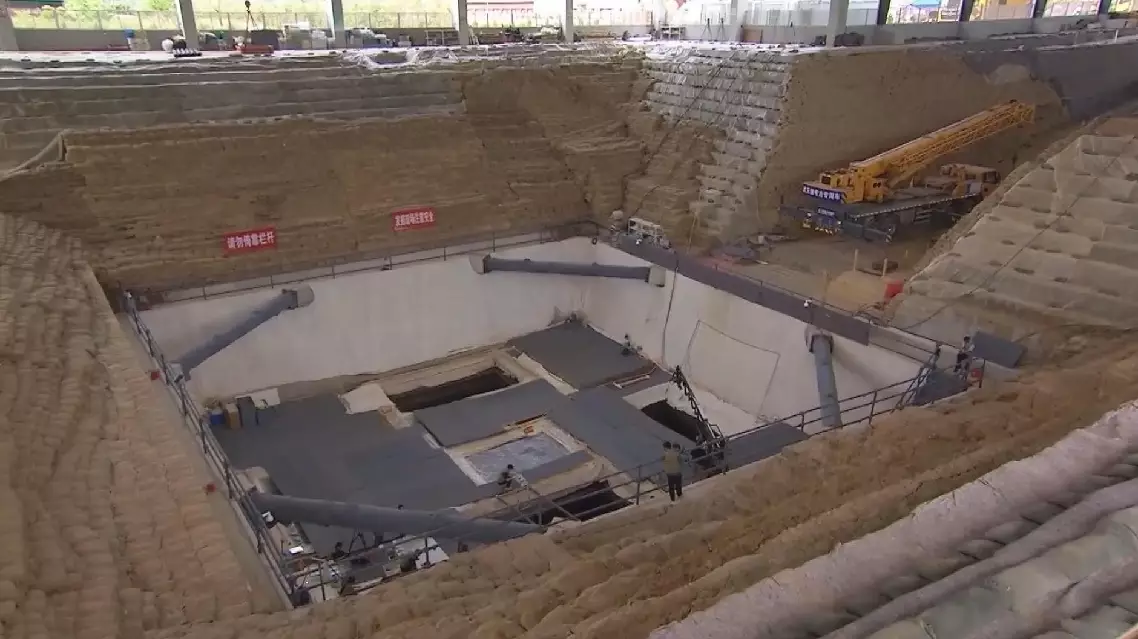
China unveils top archaeological findings of 2024












